Europa is a moon of continual fascination as it may
harbor a water ocean underneath its icy crust.
Europa resembles a cracked cue ball and the moon is
said to be an almost perfect sphere.Europa is
3,138 km in diameter and is 670,900 km away from
Jupiter.
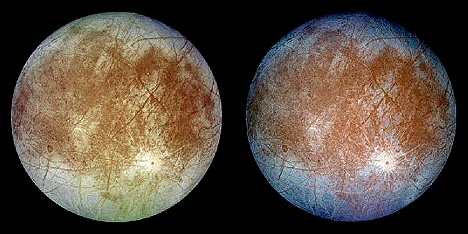
The cracks are actually fractures in the ice as a
result of
tidal flexing from Jupiter. The cracks
quickly freeze over:
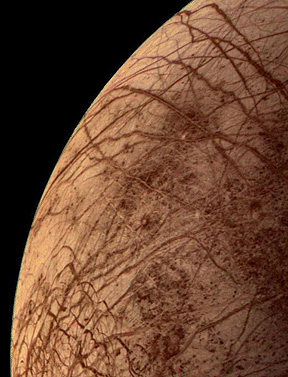
In false color, the cracks appear to demonstrate the
mineral hematite, which is a mineral resulting from
the presence of liquid water - but more data is
needed to confirm:
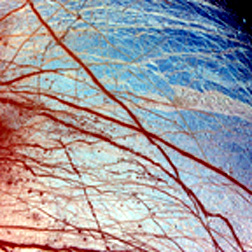
Another piece of evidence to suggest a liquid ocean
are the apparent attempts at a type of volcanism:
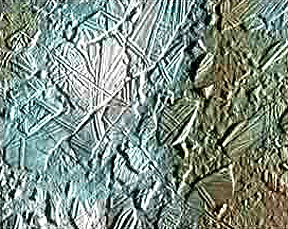
The ridges are a result of upward swelling liquid
from underneath. Plate tectonics on
Earth result in
the appearance of very few meteor craters. The same
result is seen on Europa. While a crater was found:
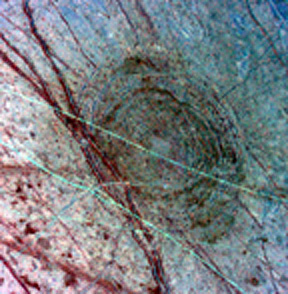
the surface is remarkably free of many impact
craters. This indicates a liquid ocean as the
surface must freeze over enough to cover any
previous craters. The energy to keep the liquid from
freezing underneath comes from two sources:
-
Tidal flexing from Jupiter
-
A warm core - the Galileo probe
did detect a magnetic field which indicates a
warm, metallic core
This leaves much to the imagination,
but it is clear we need to send more probes to
collect more data.
The prospects of life on Europa have
been covered in the
Astrobiology section.
Back to Top |

